- Home
- Tom Clancy
Marine: A Guided Tour of a Marine Expeditionary Unit tcml-4 Page 23
Marine: A Guided Tour of a Marine Expeditionary Unit tcml-4 Read online
Page 23
The CH-46 is a twin-engine, twin-rotor design, which eliminates the need for a tail rotor. The three-bladed fiberglass rotors rotate in opposite directions, and are designed to fold for shipboard storage. Each General Electric T-58-16 turboshaft engine is rated at 1770 horsepower. Both engines are mounted side by side above the tail, leaving the cabin relatively unobstructed, and incredibly noisy. The transmission is cross-connected, so that in case of damage or failure on one engine, the remaining engine can drive both rotors, albeit with vastly less performance. Marines enter and exit through a loading ramp at the rear, or forward passengers doors on either side. Maximum speed is 161 kt/259 kph, and since the fuselage is unpressurized, the maximum practical altitude is about 14,000 ft/4,267 m. The cabin is watertight, and can safely land in choppy seas, but this is an emergency procedure, not a normal operational technique.
A normal flight crew includes pilot, copilot, crew chief, and mechanic. On combat missions, the mechanic is replaced by two door gunners, and up to twenty additional troops can theoretically be carried. The gradual increase in overall weight, due to the addition of defensive electronic countermeasures, armor, and reinforced structure, has seriously reduced the actual carrying capacity of the surviving aircraft. In matter of fact, only eight to twelve loaded troops can be carried. For medical evacuation missions, the capacity is fifteen litters and two corpsmen. Up to 5,000 lb/2270 kg of cargo can be carried as an external sling load. Officially, the combat radius is given as 75 nm/139 km, but in practice the aircraft are limited to about 50 nm/91 km from their mother ship. As for the future, there will be one more planned upgrade of the Bullfrog fleet to keep it going until the MV-22 Osprey arrives in the early 21st century. Only then will the noble CH-46 take its place as a "gate guard" for Marine bases around the world.
Sikorsky CH-53E Super Stallion Helicopter
"When the balloon goes up, commanders turn to the CH-53 to get the job done. We have seen this in the Gulf War, Somalia, Rwanda, and most recently with the rescue of Captain Scott O'Grady in Bosnia."
— Marine Officer's Letter in U.S. Naval Institute Proceedings, February 1995
One of the star aerial performers in the Vietnam War was an Air Force adaptation of a big Navy helicopter, Sikorsky's HH-3 "Jolly Green Giant." These served with units like the 37th Aerospace Rescue and Recovery Squadron, flying deep into enemy jungle and mountain areas to rescue crash survivors, often under fire. Apparently, to survive on the battlefield, it isn't enough just to be agile and smart; a helicopter needs to be big and tough. The Marines were impressed enough with the HH-3 to order a new heavy assault helicopter, the CH-53A "Sea Stallion," which combined the Jolly Green Giant's fuselage and basic design with the twin engines and heavy-duty transmission of the Army's monster CH-54 Tarhe "flying crane." The Sea Stallion first flew on October 14th, 1964, and entered service with Marine Heavy Helicopter Squadron (HMH) 463 in November 1966. When production of the basic Stallion ended in 1980, the Navy and Marine Corps had taken delivery of 384 aircraft, and additional Stallions were serving with the U.S. Air Force, U.S. Navy, Austria, Germany, Iran, and Israel. By that time though, a second-generation Stallion was in the works, and was ready to enter production, the CH-53E Super Stallion.
The Sikorsky CH-53E is both big and tough. You want redundant systems? How about three engines? And how about seven rotor blades, with main spars forged from titanium? You need to fit a big helicopter on a small deck? How about folding rotor blades and a hinged tail boom, which together reduce the overall length (including rotors) from 99 ft/30.2 m down to 60 ft, 6 in./18.4m! The landing gear is fully retractable and the fuselage is watertight, in case of an emergency landing at sea. An in-flight refueling probe provides almost unlimited potential range, as long as an appropriate tanker aircraft (such as a KC-130 Hercules) is available. The cargo hook can handle an external sling load of up to 36,000 1b/16,330 kg, which means that a LAV or M198 howitzer can be delivered by air. With a sixteen-ton load, the combat radius is 50 nm/92.5 km, though this increases to 500 nm/926 km with a ten-ton sling load. No radar or FLIR is fitted, but the crews train to operate with night-vision goggles. In addition, no armament is permanently fitted, though machine gunners can easily rig machine guns to fire from the forward crew door and either side of the open rear loading ramp. The normal crew consists of a pilot, copilot, and crew chief. Up to fifty-five fully loaded troops can be carried in reasonable discomfort on folding canvas seats. A passenger tip, though: Don't sit directly under the rotor head, where the transmission tends to drip hot hydraulic oil.
A CH-53E Super Stallion heavy transport helicopter of HMM-264 pulls up and away after takeoff. The CH-53E is the fastest and most powerful helicopter currently in Marine service.
JOHN D. GRESHAM
An HMM-264 CH-53E sits fully folded on the port elevator of the USS Wasp. lost Marine helicopters have some capability to fold their rotors to save space on ship.
JOHN D. GRESHAM
The Marines have a requirement for 183 of these mission-critical birds, of which 155 had been delivered by the end of 1995, and production continues at a low rate of four per year. Eleven also have been built for the Japanese Maritime Self-Defense Force under license by Mitsubishi. With a SLEP underway, the Super Stallions are expected to serve until about 2025. By any measure — range, payload, speed, or survivability — the CH-53E is an awesome hunk of aeronautical technology. Back in the days when money was no object, the Soviet Union managed to produce a bigger troop-carrying helicopter, the Mi-26 "Halo." But nobody has ever built a better one.
The Future: Joint Strike Fighter (JSF)
During the 1950s the United States built over a thousand B-47 medium bombers. During the 1990s, the most bitter and protracted budget battles managed to provide only twenty-one B-2A stealth bombers, each costing more than a billion dollars. More aircraft have been killed by cost overruns in the design and development stage than have ever been downed by enemy guns and missiles, pilot errors, or engine flameouts. Projecting the trend into the 21st century, industry observers sometimes joke about a future when the entire defense budget will only suffice to purchase one aircraft; Air Force pilots will be allowed to fly it Monday through Thursday, Navy aviators on Friday and Saturday, and the Marines on alternate Sundays, if it isn't down for maintenance.
An artists concept of the McDonnell Douglas/Northrup Grumman/British Aerospace Marine STOVL Joint Strike Fighter entry. This aircraft is designed to replace both the AV-8B Harrier and F/A-18 Hornet for the Marine Corps, as well as the Royal Navy Harrier FRS.2s.
McDONNELL DOUGLAS AERONAUTICAL SYSTEMS
With these depressing realities in mind, there are two technical approaches to making a high-performance aircraft affordable. First, make it light. Every non-essential pound/kilogram imposes severe cost and performance penalties. The best example of how to make an aircraft light, simple, and advanced is the Douglas A-4 Skyhawk — Ed Heinemann's classic 1951 design — a five-ton airplane designed to deliver a one-ton nuclear bomb with a single engine of 7,700 1b of thrust. Second, make it generic. That is, make a single basic airframe design serve the widest possible range of roles and missions. Beginning in the late 1980s, under the acronym JAST (Joint Advanced Strike Technologies), a Defense Department Program Office made a serious effort to push these approaches right to the "edge of the envelope." The aerospace industry, seeing the only opportunity for a major new program in the opening decades of the next century, responded with enthusiasm. Now called the Joint Strike Fighter (JSF), the program office is headed by a rear admiral, who reports to an Air Force Assistant Secretary.
Pilots tend to be exceedingly suspicious of anything with the word "joint" attached to it, unless they are talking to an orthopedic surgeon about a sports injury. From an aviator's perspective, a "joint" aircraft is likely turn into a camel (i.e., a "horse designed by a committee"). The three services have radically different tactical doctrines and tribal cultures, and even the most brilliant design team will face a thicket of comprom
ises in trying to fit one airframe to such widely different customers. If you are flying an aircraft into combat, you want that feeling of confidence that only comes from knowing that the designer made no compromises with anything, including the laws of physics. JSF's program managers, aware of this issue, are striving for a relatively modest goal-80 %, "commonality" of major structural components and systems.
JSF is actually three aircraft. A conventional takeoff and landing (CTOL) model will replace the Air Force's F-16 Fighting Falcon, with a unit price target of $28 million, and an awesome procurement target of 1,874 units. A Navy version to replace the aging F-14 Tomcat and early F/A-18 Hornet types will have a strengthened fuselage structure and special landing gear for carrier operations, raising the unit cost to between $35 and $38 million, with a requirement for at least 300 units. The Marine version, to replace the Harrier, will be capable of short takeoff and vertical landing (STOVL), at a unit price of $30–32 million. The Marines want 642 units. Three industry teams are competing for the contract. They include Boeing, McDonnell Douglas/Northrop Grumman/British Aerospace, and Lockheed Martin.
All the designs show a strong influence from the F-22 and F-23 advanced stealth fighter designs, with widely separated twin tail fins, splayed out at a sharp angle. The Boeing design has a hinged air scoop under the nose, which gives the aircraft an uncanny resemblance to a gasping fish. The inlet swings down to increase airflow to the engine at low speeds, and swings up to reduce overall drag at high speed. The twin exhaust nozzles rotate, just like on the Harrier. The McDonnell design looks like a slimmed-down F-23, with sharply swept wings mounted well aft. The Lockheed Martin design has a vertically mounted lift fan, driven during takeoff by power from the main engine, just behind the cockpit. There are small canards (auxiliary wings) mounted just forward of the main wings, which closely resemble the diamond-shaped planform of the F-22. In effect, there will be as many as nine different prototype designs, all using the Pratt & Whitney F119 turbofan developed for the F-22. This was the first turbofan capable of supersonic cruise without use of a gas-guzzling afterburner. General Electric will also continue development of its F-120 engine, which was not selected in the F-22 competition, but represents a viable alternative if F-119 development runs into difficulties.
For the JSF program, failure is not an option. Low-rate initial production is scheduled to begin in 2005, and deliveries to operational units are pegged for 2007. By that date, several generations of combat aircraft will be facing block obsolescence, even if we are lucky and no unexpected new threats emerge. Many types that are familiar sights in 1996 will have been prematurely retired, due to escalating maintenance and support costs, airframe fatigue, and normal peacetime attrition.
The Future: The Bell Boeing MV-22 Osprey
We call it a helicopter only because it takes off and lands vertically, but the V-22 Osprey really performs like a small C-130 Hercules transport. As for the importance of the program, the Osprey is designed to replace the entire fleet of CH-46 Sea Knights, which will be entering their fifth decade of service by the time that the V-22 arrives on the scene. It also represents the single biggest technological gamble in the history of the Marine Corps. On the strange wings of the Osprey, the Marines have bet not only their ability to conduct vertical envelopment assaults, but the whole future of over-the-horizon/standoff amphibious warfare.
Ever since the Wright brothers began to fly heavier-than-air vehicles on the Atlantic shore at Kitty Hawk, North Carolina, there has been a dream that you could build an airplane that would take off vertically like a helicopter and still fly like a conventional airplane. The Harrier represents one set of engineering compromises to achieve this, though at a high cost in range and payload. But even tougher to build than a fighter/bomber is a medium lift transport aircraft with the lifting performance of a CH-46 and the speed and range of a C-130 Hercules. Back in the 1950s the idea was put forth that perhaps you could place the engines of such an aircraft out on the ends of the wings, then tilt the engines in much the same way that the vectored thrust nozzles of the Harrier's Pegasus engine rotate. The first aircraft demonstrates this was the Bell XV-3, which flew in 1955, and spent eleven years testing out the tilt-rotor concept. Following this, NASA had Bell build a more advanced aircraft, the XV-15, which first flew in 1976. This incredible experimental aircraft's achievements are still legend in the flight-test world. It proved once and for all that a tilt rotor transport aircraft was not only possible, but would have some very desirable qualities.
A Bell Boeing MV-22 Osprey tilt-rotor transport begins the transition to forward flight following takeoff. The engines are beginning to tilt forward and the landing gear are retracting.
BELL HELICOPTER-TEXTRON
A prototype MV-22 Osprey on the USS Wasp (LHD-1) during compatibility trials. This aircraft has the wing and rotor blades fully folded in the fore-and-aft position to save stowage space aboard ship.
BELL HELICOPTER-TEXTRON
Next came the multi-service Joint Vertical Experimental (JVX) requirement, for over five hundred tilt rotor transport aircraft for combat search and rescue (CSAR), special operations (SPECOPS), medical evacuation (MEDEVAC), and replacement of the entire fleet of CH-46 Sea Knights and CH-53D Sea Stallions. In 1983, a team of Bell-Textron and Boeing Vertol won the JVX contract for design and development of what would become known as the V-22 Osprey. Development continued throughout the 1980s, and appeared to be going well despite the usual glitches associated with any new aircraft. Then, as a cost-cutting move, Secretary of Defense Dick Cheney abruptly canceled the entire program in 1989, leaving Bell Boeing with a big nothing for all their work, and all four of the services scrambling to find replacements for the Osprey. As it turned out, they never did, and this caused a small guerrilla movement to break out among the services to revive the V-22. As if this was not enough of a challenge, there were a pair of crashes by prototype V-22s (neither of which was design-related), which gave opponents lots of ammunition for keeping the program canceled. Though no one was lost in the first accident, in the second, all seven aboard were killed; and things looked bleak for the Osprey and those who had backed it.
Then, in 1993, good things began to happen for the V-22. The coming of a new Administration allowed the Department of Defense to take a fresh look at the aircraft and the requirements it was meant to fulfill. After a small mountain of studies, the Clinton Administration decided to restart the Osprey production program, and began to work towards a planned initial operational capability for the first squadron of 2001. Since that time, the first new production Ospreys, officially designated MV- 22B (this is the Marine variant), have been mated and are moving towards final assembly. The first flight is scheduled for 1996, and the program is moving along well; it's on time and on budget. As an added bonus, the other three services have reevaluated their requirements and are beginning to get back into the V-22 program, with the Air Force's SPECOPS program first among the newcomers. Current program production plans have the USMC buying 425, the Air Force 50 for special operations, and the Navy 48 for CSAR, for a planned total of 523 units. Current cost estimates place the average flyaway cost (including non-recurring R&D costs) of around $32 million a copy, though Bell-Boeing thinks that they can get that down to under $29 million.
As currently planned, the MY-22 will be about 57 ft, 4 in./25.8 m long with a wingspan of 50 ft, 11 in./15.5 m, and a height of 22 ft, 7 in./6.9 m. It will weigh in empty at 31,886 1b/14,463 kg, and will have a maximum takeoff weight of 60,500 lb/27,947 kg in a STOVL mode. Maximum payload will be twenty-four fully loaded troops or 20,000 1b/9,072 kg of cargo. Performance will include a top-level flight speed of 314 kt/582 kph and a maximum ferry range of around 2,100 nm/3,829 km, and a tactical range of around 1,800 nm/3,336 km. These are impressive numbers for an aircraft with roughly the same folded dimensions as the CH-46. Inside the MV-22B will be a cockpit that is arguably the most advanced of any aircraft in the world. Based on the cockpit of the Air Force's MH-53J Pave Low
III SPECOPS helicopter and the MC-130H Combat Talon II aircraft, it has undergone many improvements in the years that the program has taken to mature. This is a good thing, because a few years back, I nearly killed myself and a few other folks in a full-motion V-22 flight simulator, trying to fly the thing like a normal helicopter. Today, the MV-22's two man cockpit looks a lot like a normal military cockpit, with a control stick, left-side thrust control lever, and a whole panel of flat multi-function displays (MFDs) to show them all of the vital flight data. This includes a moving-map display tied to a GPS aided inertia navigation system, so that pinpoint, split-second landing operations can become the rule rather than the exception. There is also a FLIR pilotage system to allow enhanced night operations. The entire aircraft is sealed against chemical, nuclear, and biological threats by an overpressure /filter system.
Flying this new bird is, to say the least, a bit strange. I got to try it on the new mission simulator at Bell's Plant in Fort Worth, Texas, and it was an eye-opener. To lift off, you advance the thrust control lever on your left forward, and the MV-22 lifts off smoothly. To transition to high-speed level flight, you push a small thumbwheel on the thrust control forward, and the engines rotate down in 3deg increments. Once they are in the full "down" position, you are essentially flying a high-performance turboprop transport, which is actually quite agile and comfortable. To land, you begin to pull back on the thumbwheel, causing the engines to rotate back to the vertical. The fly-by-wire system makes this very comfortable, and your eyes begin to transition to the MFD, which tells you the sink rate towards the ground. This is the critical condition to watch, because you need to keep this fairly low. Tilt-rotor aircraft cannot apply power quite as fast as normal helicopters, and you have to think a little "ahead" to make this go smoothly. If you've done it right, you should feel a gentle "thump," and you are down.

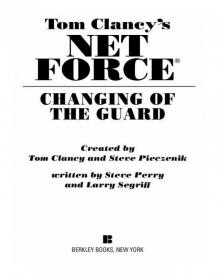 Changing of the Guard
Changing of the Guard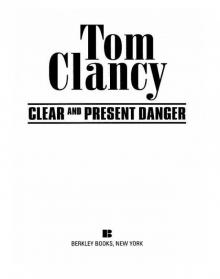 Clear and Present Danger
Clear and Present Danger Hounds of Rome
Hounds of Rome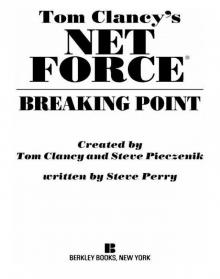 Breaking Point
Breaking Point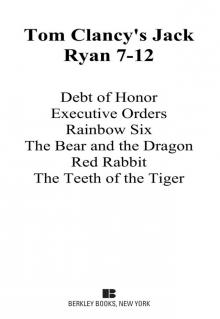 Tom Clancy's Jack Ryan Books 7-12
Tom Clancy's Jack Ryan Books 7-12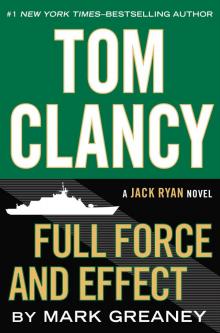 Full Force and Effect
Full Force and Effect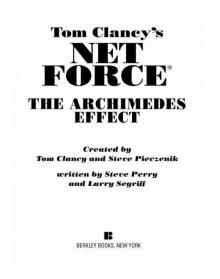 The Archimedes Effect
The Archimedes Effect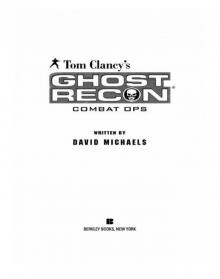 Combat Ops
Combat Ops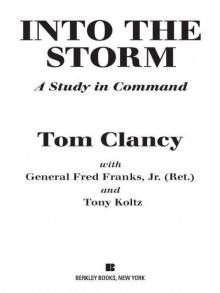 Into the Storm: On the Ground in Iraq
Into the Storm: On the Ground in Iraq Under Fire
Under Fire Point of Impact
Point of Impact Red Rabbit
Red Rabbit Rainbow Six
Rainbow Six The Hunt for Red October
The Hunt for Red October The Teeth of the Tiger
The Teeth of the Tiger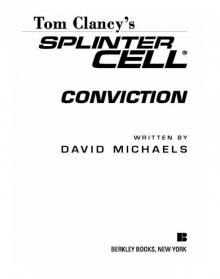 Conviction (2009)
Conviction (2009)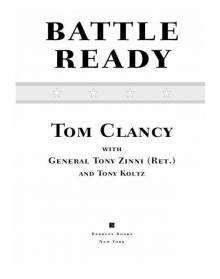 Battle Ready
Battle Ready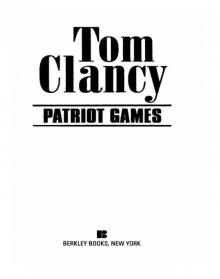 Patriot Games
Patriot Games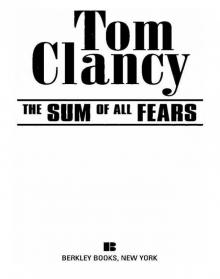 The Sum of All Fears
The Sum of All Fears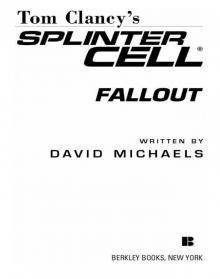 Fallout (2007)
Fallout (2007) Red Storm Rising
Red Storm Rising The Cardinal of the Kremlin
The Cardinal of the Kremlin Executive Orders
Executive Orders Lincoln, the unknown
Lincoln, the unknown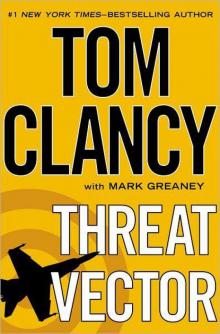 Threat Vector
Threat Vector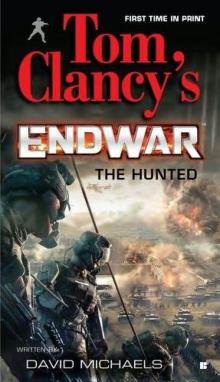 The Hunted
The Hunted Shadow Warriors: Inside the Special Forces
Shadow Warriors: Inside the Special Forces End Game
End Game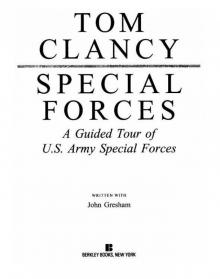 Special Forces: A Guided Tour of U.S. Army Special Forces
Special Forces: A Guided Tour of U.S. Army Special Forces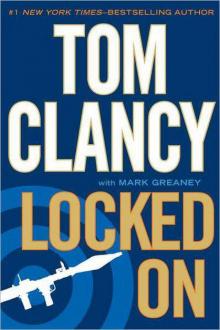 Locked On
Locked On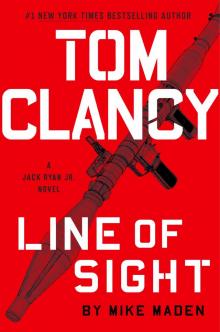 Line of Sight
Line of Sight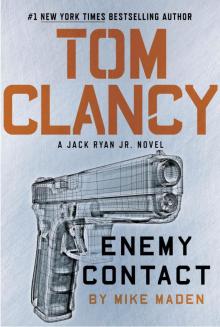 Tom Clancy Enemy Contact - Mike Maden
Tom Clancy Enemy Contact - Mike Maden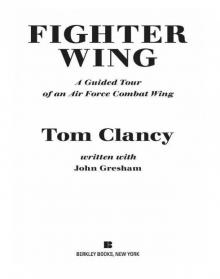 Fighter Wing: A Guided Tour of an Air Force Combat Wing
Fighter Wing: A Guided Tour of an Air Force Combat Wing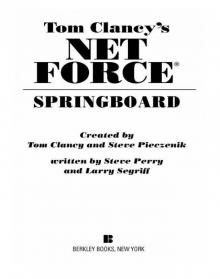 Springboard
Springboard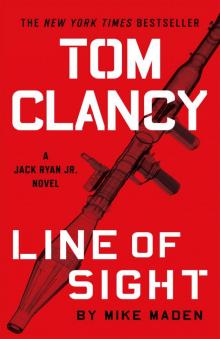 Line of Sight - Mike Maden
Line of Sight - Mike Maden EndWar
EndWar Dead or Alive
Dead or Alive Tom Clancy Support and Defend
Tom Clancy Support and Defend Checkmate
Checkmate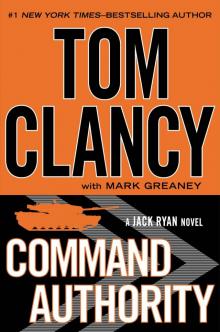 Command Authority
Command Authority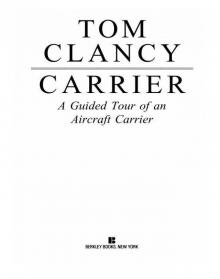 Carrier: A Guided Tour of an Aircraft Carrier
Carrier: A Guided Tour of an Aircraft Carrier Blacklist Aftermath
Blacklist Aftermath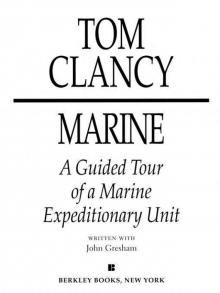 Marine: A Guided Tour of a Marine Expeditionary Unit
Marine: A Guided Tour of a Marine Expeditionary Unit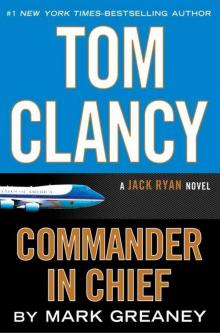 Commander-In-Chief
Commander-In-Chief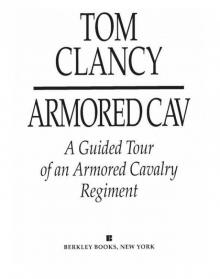 Armored Cav: A Guided Tour of an Armored Cavalry Regiment
Armored Cav: A Guided Tour of an Armored Cavalry Regiment Tom Clancy's Jack Ryan Books 1-6
Tom Clancy's Jack Ryan Books 1-6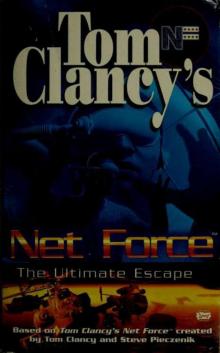 The Ultimate Escape
The Ultimate Escape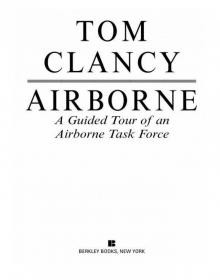 Airborne: A Guided Tour of an Airborne Task Force
Airborne: A Guided Tour of an Airborne Task Force Debt of Honor
Debt of Honor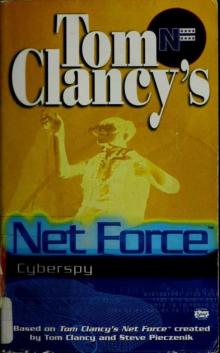 Cyberspy
Cyberspy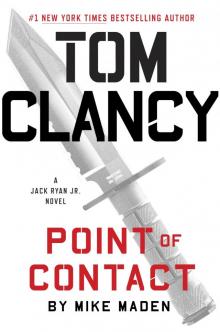 Point of Contact
Point of Contact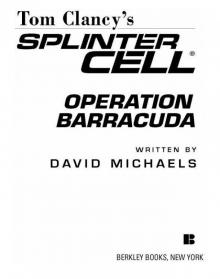 Operation Barracuda (2005)
Operation Barracuda (2005)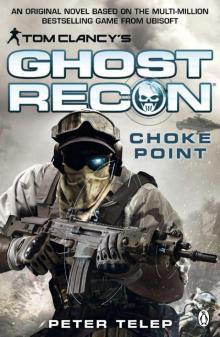 Choke Point
Choke Point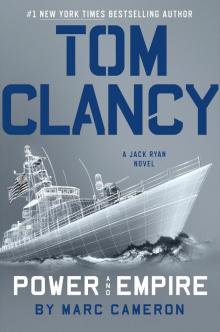 Power and Empire
Power and Empire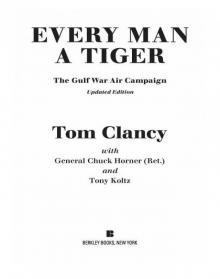 Every Man a Tiger: The Gulf War Air Campaign
Every Man a Tiger: The Gulf War Air Campaign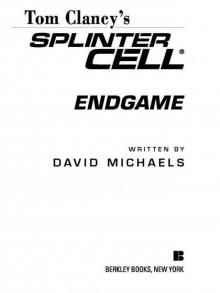 Endgame (1998)
Endgame (1998)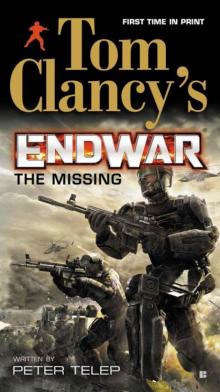 EndWar: The Missing
EndWar: The Missing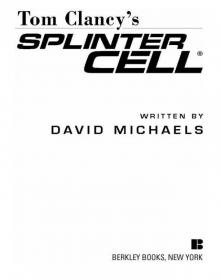 Splinter Cell (2004)
Splinter Cell (2004)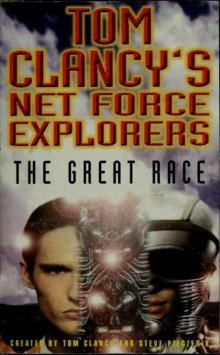 The Great Race
The Great Race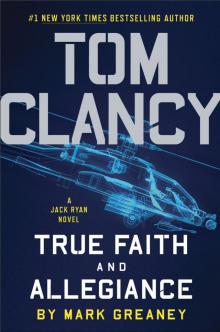 True Faith and Allegiance
True Faith and Allegiance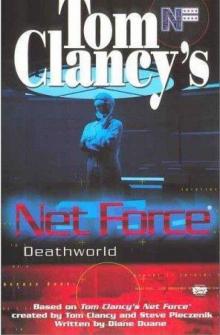 Deathworld
Deathworld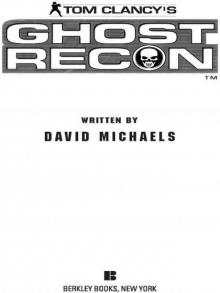 Ghost Recon (2008)
Ghost Recon (2008)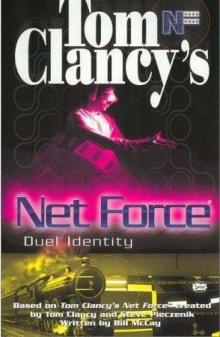 Duel Identity
Duel Identity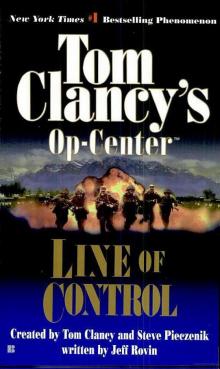 Line of Control o-8
Line of Control o-8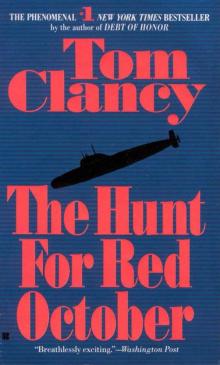 The Hunt for Red October jr-3
The Hunt for Red October jr-3 Hidden Agendas nf-2
Hidden Agendas nf-2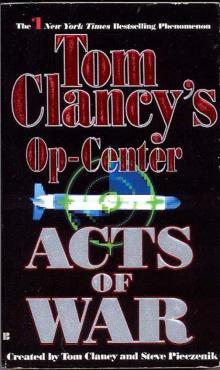 Acts of War oc-4
Acts of War oc-4 Ruthless.Com pp-2
Ruthless.Com pp-2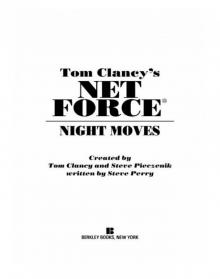 Night Moves
Night Moves The Hounds of Rome - Mystery of a Fugitive Priest
The Hounds of Rome - Mystery of a Fugitive Priest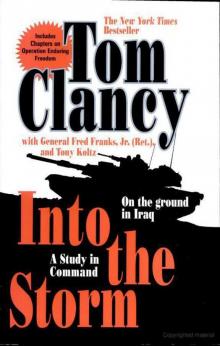 Into the Storm: On the Ground in Iraq sic-1
Into the Storm: On the Ground in Iraq sic-1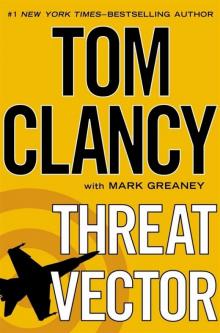 Threat Vector jrj-4
Threat Vector jrj-4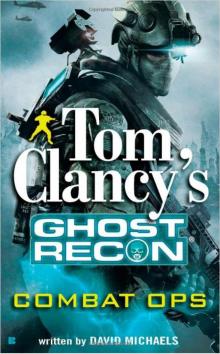 Combat Ops gr-2
Combat Ops gr-2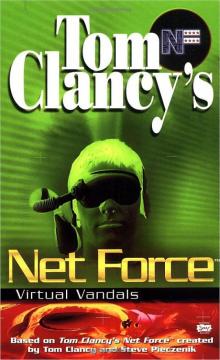 Virtual Vandals nfe-1
Virtual Vandals nfe-1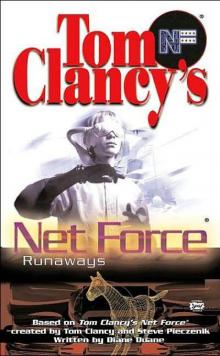 Runaways nfe-16
Runaways nfe-16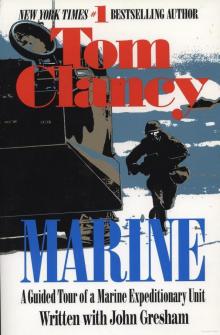 Marine: A Guided Tour of a Marine Expeditionary Unit tcml-4
Marine: A Guided Tour of a Marine Expeditionary Unit tcml-4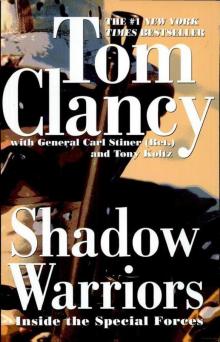 Shadow Warriors: Inside the Special Forces sic-3
Shadow Warriors: Inside the Special Forces sic-3 Jack Ryan Books 1-6
Jack Ryan Books 1-6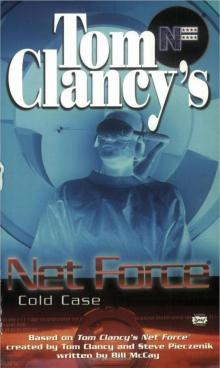 Cold Case nfe-15
Cold Case nfe-15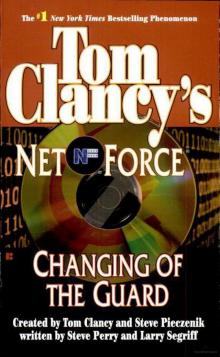 Changing of the Guard nf-8
Changing of the Guard nf-8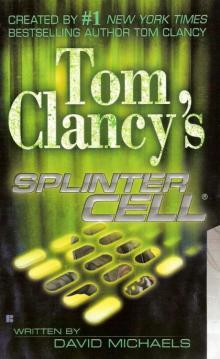 Splinter Cell sc-1
Splinter Cell sc-1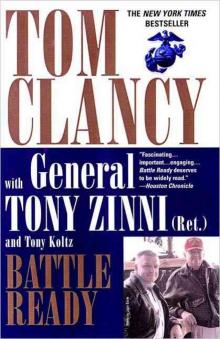 Battle Ready sic-4
Battle Ready sic-4 The Bear and the Dragon jrao-11
The Bear and the Dragon jrao-11 Fighter Wing: A Guided Tour of an Air Force Combat Wing tcml-3
Fighter Wing: A Guided Tour of an Air Force Combat Wing tcml-3 Patriot Games jr-1
Patriot Games jr-1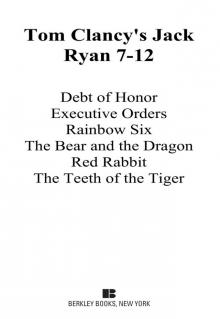 Jack Ryan Books 7-12
Jack Ryan Books 7-12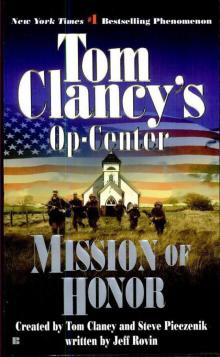 Mission of Honor o-9
Mission of Honor o-9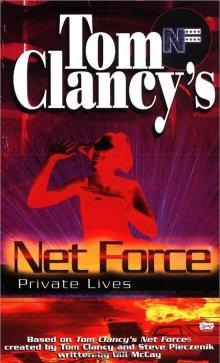 Private Lives nfe-9
Private Lives nfe-9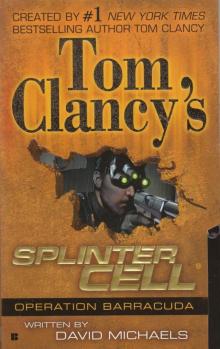 Operation Barracuda sc-2
Operation Barracuda sc-2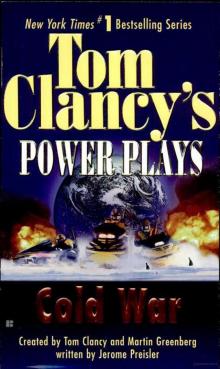 Cold War pp-5
Cold War pp-5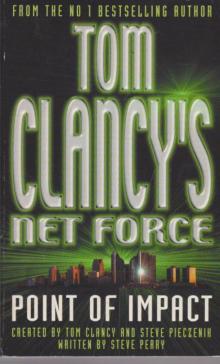 Point of Impact nf-5
Point of Impact nf-5 Red Rabbit jr-9
Red Rabbit jr-9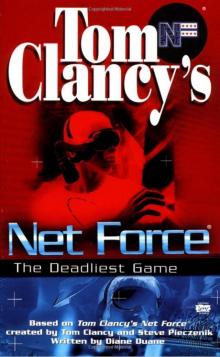 The Deadliest Game nfe-2
The Deadliest Game nfe-2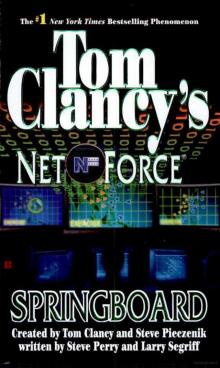 Springboard nf-9
Springboard nf-9 Safe House nfe-10
Safe House nfe-10 EndWar e-1
EndWar e-1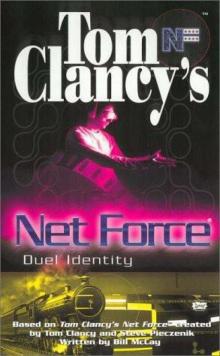 Duel Identity nfe-12
Duel Identity nfe-12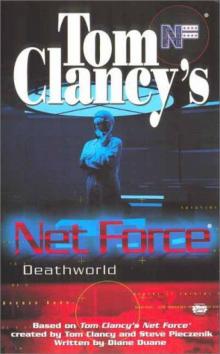 Deathworld nfe-13
Deathworld nfe-13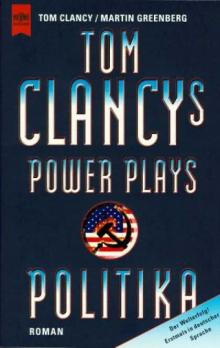 Politika pp-1
Politika pp-1 Rainbow Six jr-9
Rainbow Six jr-9 Tom Clancy's Power Plays 1 - 4
Tom Clancy's Power Plays 1 - 4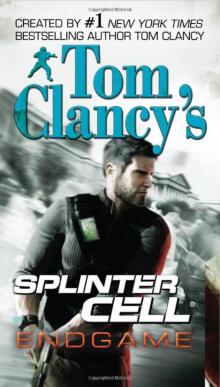 Endgame sc-6
Endgame sc-6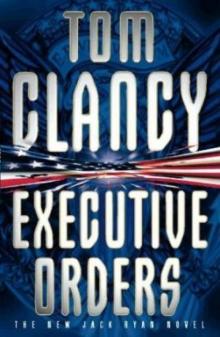 Executive Orders jr-7
Executive Orders jr-7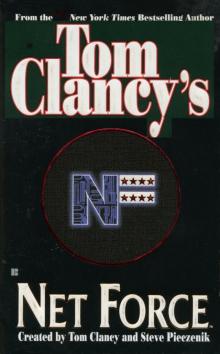 Net Force nf-1
Net Force nf-1 Call to Treason o-11
Call to Treason o-11 Locked On jrj-3
Locked On jrj-3 Against All Enemies
Against All Enemies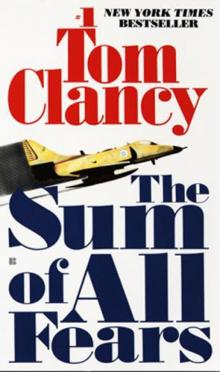 The Sum of All Fears jr-7
The Sum of All Fears jr-7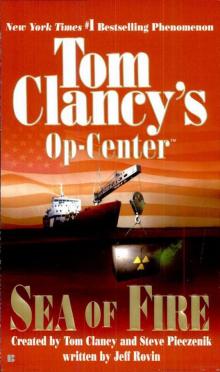 Sea of Fire o-10
Sea of Fire o-10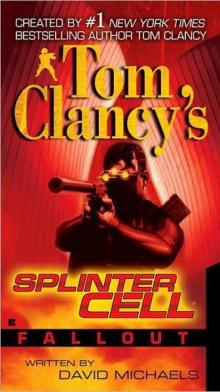 Fallout sc-4
Fallout sc-4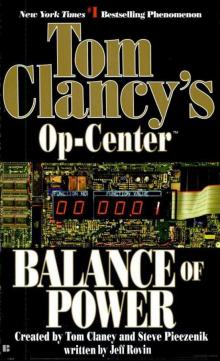 Balance of Power o-5
Balance of Power o-5 Shadow Watch pp-3
Shadow Watch pp-3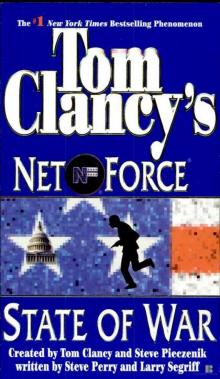 State of War nf-7
State of War nf-7 Wild Card pp-8
Wild Card pp-8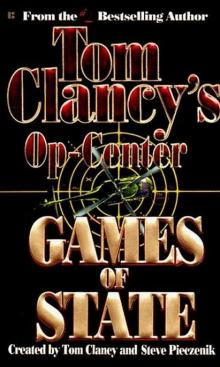 Games of State o-3
Games of State o-3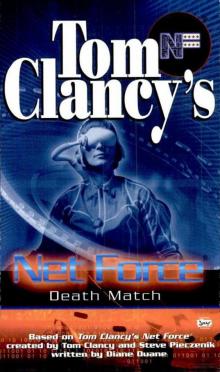 Death Match nfe-18
Death Match nfe-18 Against All Enemies mm-1
Against All Enemies mm-1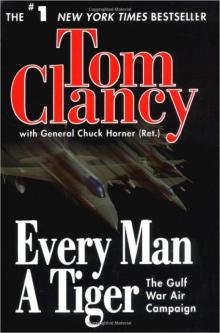 Every Man a Tiger: The Gulf War Air Campaign sic-2
Every Man a Tiger: The Gulf War Air Campaign sic-2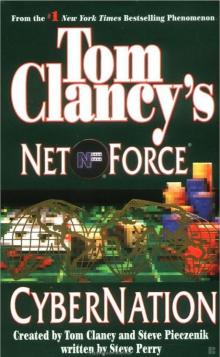 Cybernation nf-6
Cybernation nf-6 Support and Defend
Support and Defend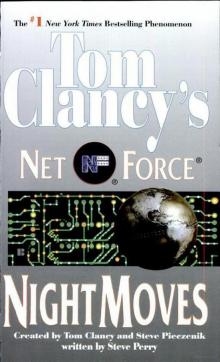 Night Moves nf-3
Night Moves nf-3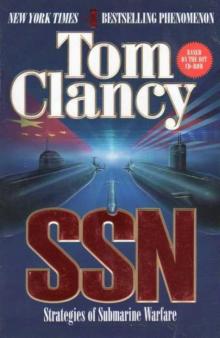 SSN
SSN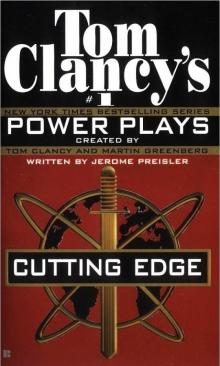 Cutting Edge pp-6
Cutting Edge pp-6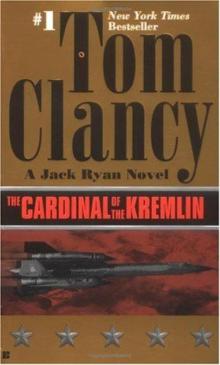 The Cardinal of the Kremlin jrao-5
The Cardinal of the Kremlin jrao-5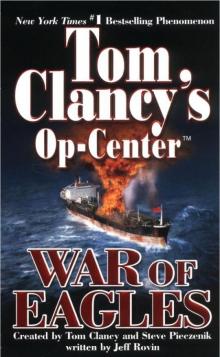 War of Eagles o-12
War of Eagles o-12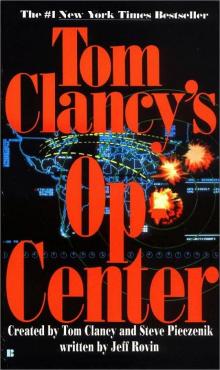 Op-Center o-1
Op-Center o-1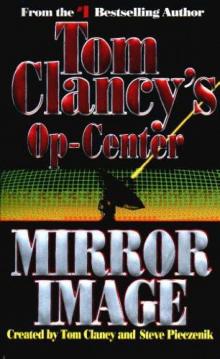 Mirror Image o-2
Mirror Image o-2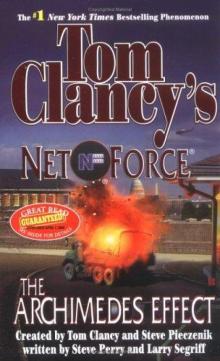 The Archimedes Effect nf-10
The Archimedes Effect nf-10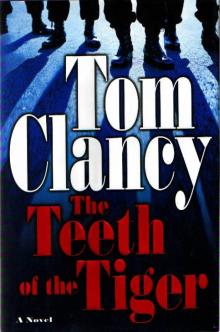 Teeth of the Tiger jrj-1
Teeth of the Tiger jrj-1 Bio-Strike pp-4
Bio-Strike pp-4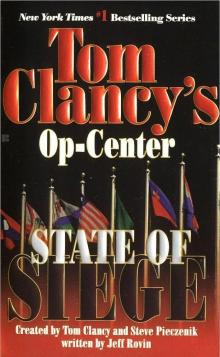 State of Siege o-6
State of Siege o-6 Debt of Honor jr-6
Debt of Honor jr-6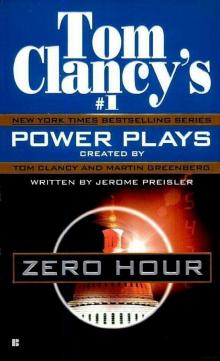 Zero Hour pp-7
Zero Hour pp-7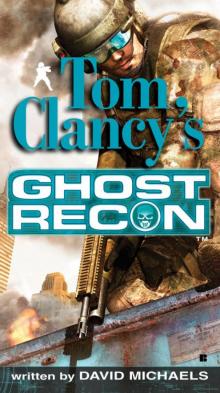 Ghost Recon gr-1
Ghost Recon gr-1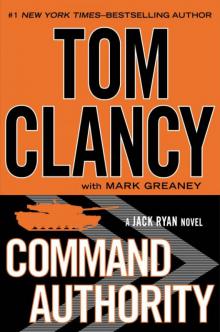 Command Authority jr-10
Command Authority jr-10 Tom Clancy's Power Plays 5 - 8
Tom Clancy's Power Plays 5 - 8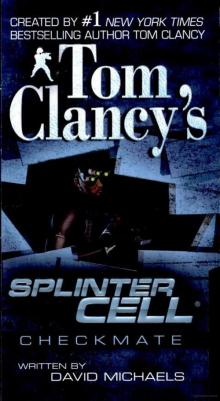 Checkmate sc-3
Checkmate sc-3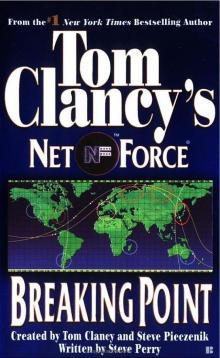 Breaking Point nf-4
Breaking Point nf-4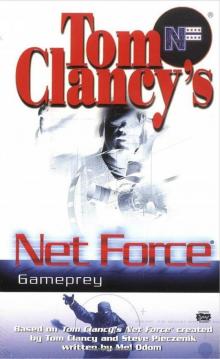 Gameprey nfe-11
Gameprey nfe-11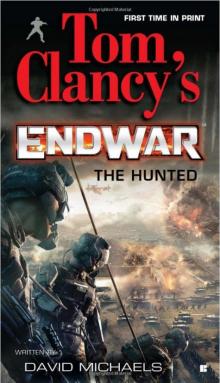 The Hunted e-2
The Hunted e-2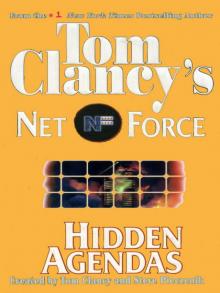 Hidden Agendas
Hidden Agendas Divide and Conquer o-7
Divide and Conquer o-7